So. It’s almost October 31st, and you don’t have a Halloween costume idea yet. The situation is even more dire if you’re facing a company costume contest. Your competitive side yearns to get decked out as a steampunk zombie Stormtrooper, but do you really have time for all that? Better just watch Hocus Pocus for the umpteenth time and let Glen from sales get all the glory…
Or not! In the immortal words of Edna Mode, pull yourself together. Here are 10 of our best last-minute group costume ideas. All of them are appropriate for work, and most can be adjusted if you’re dressing up solo. Plus, if you’re a business owner, celebrating holidays can go hand-in-hand with seasonal marketing goals like increasing your presence in the community. Let’s get spooky!
Related: How to make free party invitations
1. Quoth the raven, “Nevermore”
Why not dress up as a group of literary characters? Here we have Edgar Allen Poe, the Raven and Annabel Lee. But don’t forget about characters from The Legend of Sleepy Hollow, The Scarlet Letter, Strange Case of Dr. Jekyll and Mr. Hyde, The Shining, Rip Van Winkle, and more. The more recognizable the story, the better. If you’ve got a large group, try dressing up the extras as townspeople or peripheral characters.
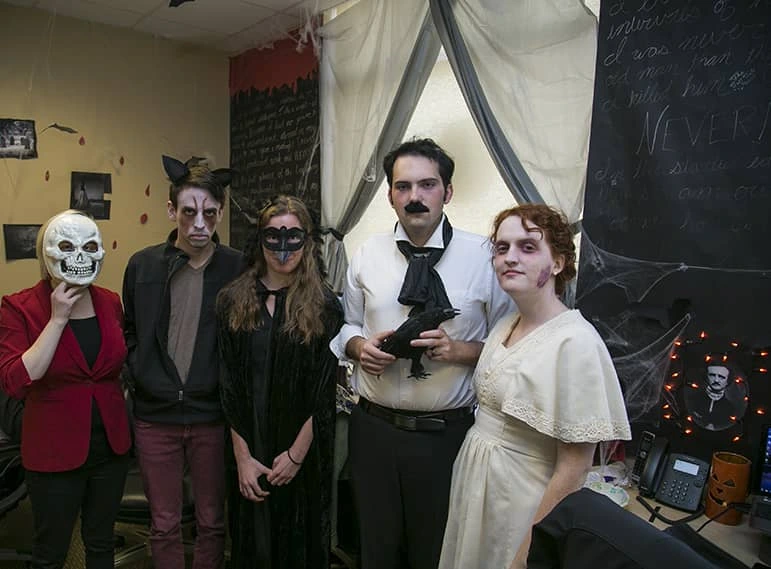
2. Zombies anonymous
The zombie craze started several years ago, so dressing up as a zombie may feel played out. That’s why you should be a reformed zombie. Slap on some zombie makeup, but keep your clothes business casual, and don’t forget a name tag on your shirt. Bonus points if your group switches their seating arrangement to a circle of folding chairs.
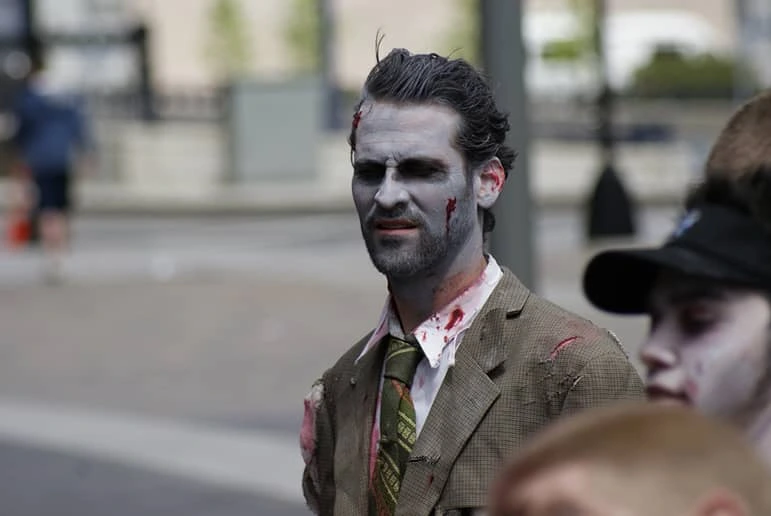
Photo credit: Steve Spezz
3. Pun for cover
No one will be safe from your cunning punnery. You can put a twist on popular songs, as Demi Lovato did with “Trap Queen” by rapper Fetty Wap. Or come up with creative takes on common phrases. For example, this year I’m dressing up as a fox and carrying around a Coldstone Creamery cup (get it?). My husband will wear a baggy shirt tucked into high-waisted jeans and carry a fryer basket from the local thrift shop. That’s right—he’s Friar Tuck. I can hear the groans already!
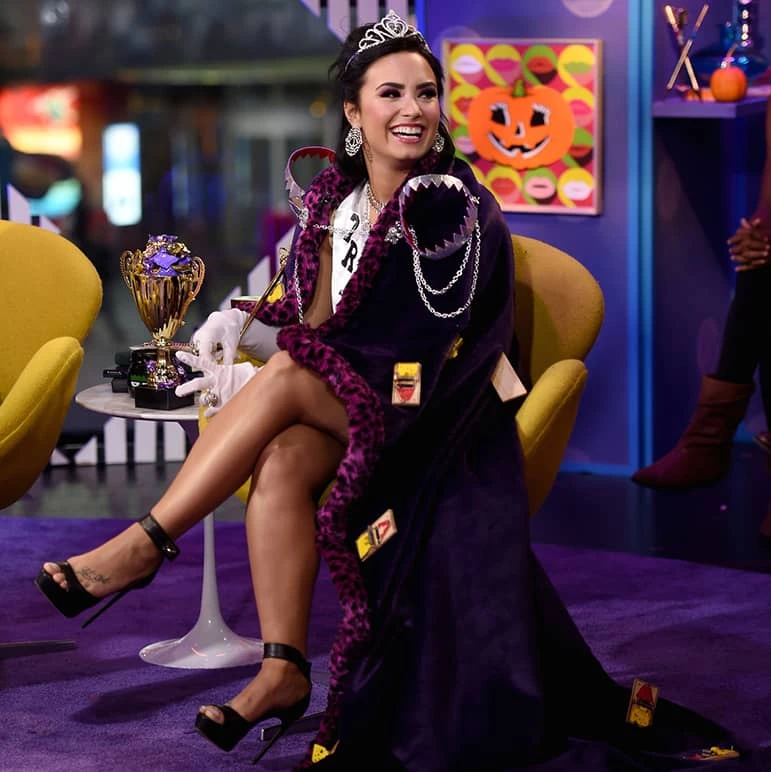
Photo credit: Dimitrios Kambouris/MTV
4. Famous ghosts
What could be easier than a ghost costume? To add some flair to this idea, have each member of your group go as a famous ghost. There’s Nearly Headless Nick, Casper, The Ghost of Christmas Past, and even Slimer from Ghostbusters. Just take your pick!
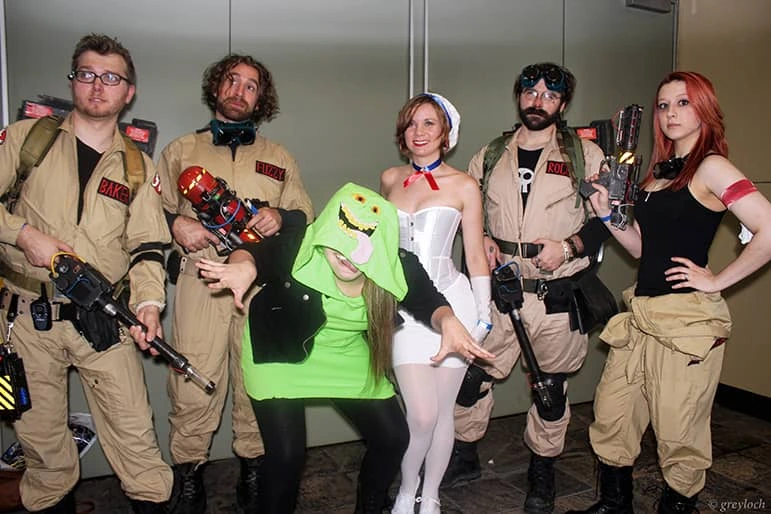
Photo credit: greyloch
5. Video vixens & villains
Get inspired by music videos like Taylor Swift’s “Bad Blood.” Your girl gang just needs to dress in black, add some metallic flourishes, (what else is duct tape for if not last-minute costumes?), and stomp through the office like aspiring models. You can also dress up like rock stars (The Misfits, New York Dolls), boyband members (Backstreet Boys, One Direction), riot grrrls (Bikini Kill, Sleater-Kinney)… the possibilities are endless.
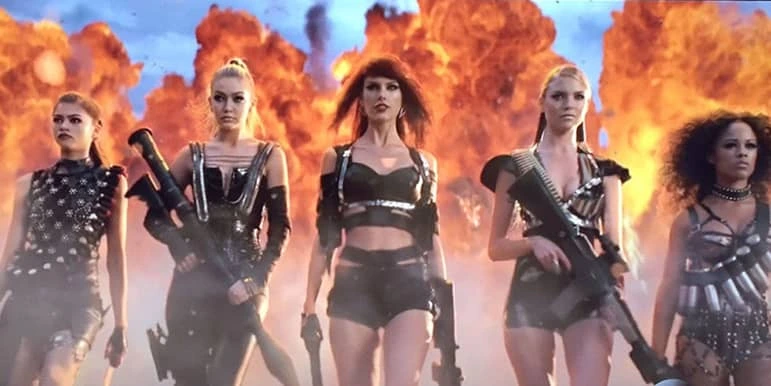
Photo credit: YouTube
6. The creative force awakens
Stay ahead of the curve by dressing up as characters from popular movies like Star Wars: The Force Awakens. The teaser trailers usually have plenty of material to work with. Other easy-to-riff movies & TV shows include The Royal Tenenbaums, Empire, Scooby Doo, Office Space, Star Trek, The Addams Family, and a whole lot more. Again, the more recognizable the source material, the easier it will be to scare up a costume.
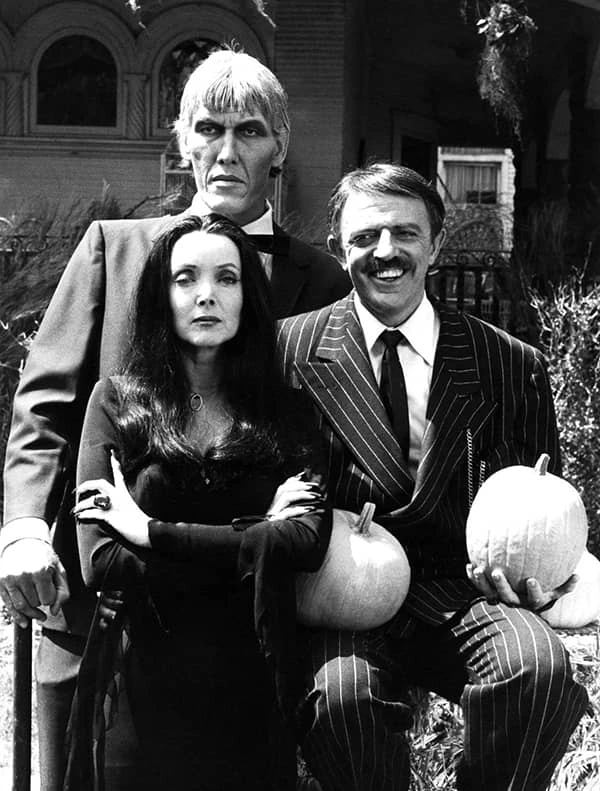
7. Fly international
Here’s a super easy idea. Dress up each member of your group as a different country, region or continent. France can don a beret and carry a baguette, while Canada can hold a cup of Tim Horton’s and talk incessantly about hockey. Just remember: cultural appreciation is awesome, while appropriation is not.
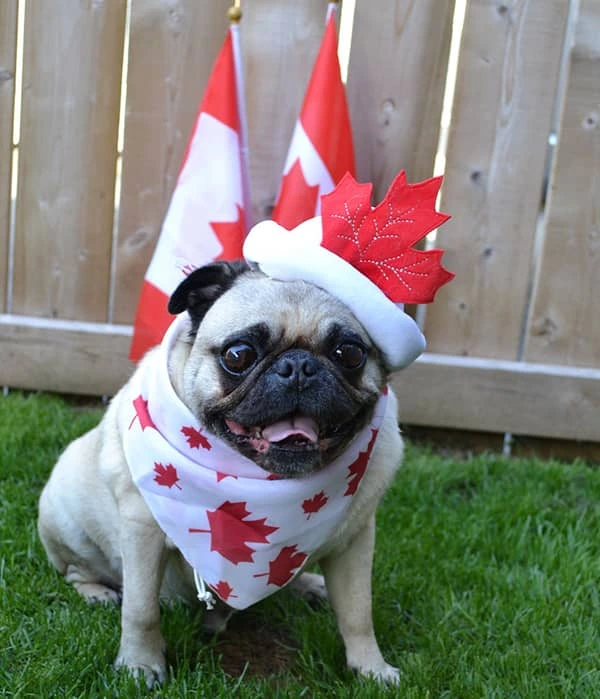
Photo credit: DaPuglet
8. The inside joke
This one is more of a prompt, but we believe in your ability to give it life. Just think of an office-wide joke and turn it into a costume. For example, we’re a web-based software company, so we have lots of inside jokes about hardware and software. Perhaps this year, an enterprising trio will dress up as a slow-moving, spammy-looking Internet Explorer, a preppy Safari, and a Chrome that seems normal but rifles through your desk for personal information as soon as your back is turned. (We still love you, Chrome.)
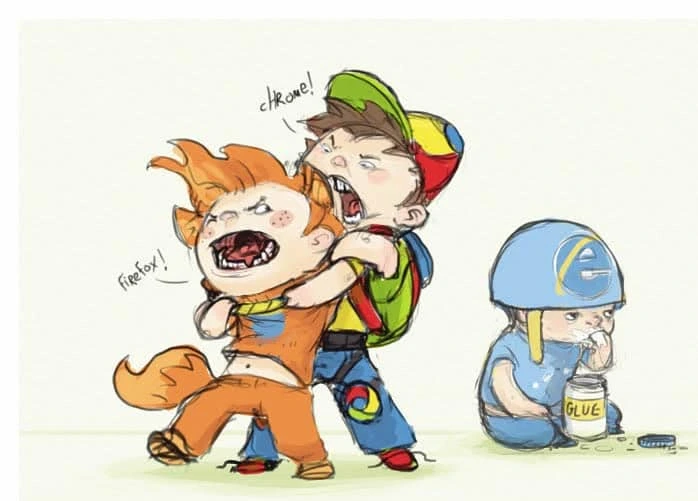
9. A star is re-born
Try dressing each member of your group as a different version of a famous actor like Tom Cruise. Aviators and a leather jacket turn you into Maverick from Top Gun, and it’s easy to create similarly recognizable costumes for his roles in Mission Impossible, Risky Business, The Outsiders, or Interview with the Vampire. You can even recreate couch-jumping Tom with a simple black turtleneck. Adapt this idea for a group of women with a prolific actor like Kate Winslet.
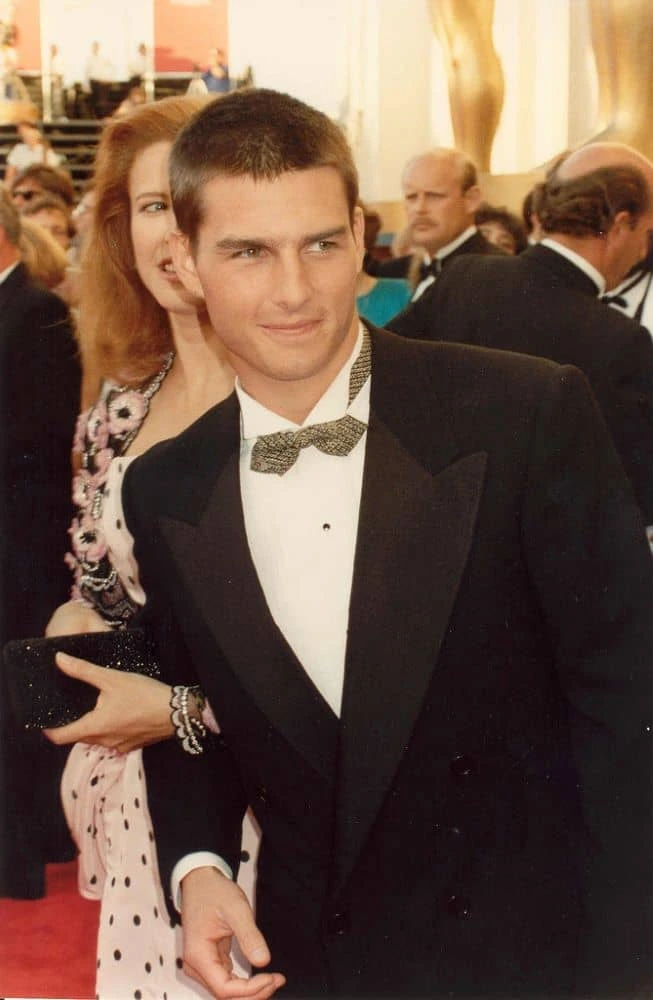
Photo credit: Alan Light
10. All in the family
Try dressing up as members of another department in your company. It’s even better if your departments have an ongoing rivalry.
11. Three blind mice
Why not show up as a motley crew of nursery rhyme characters? It’s certainly different from most group costumes. Plus, there are hundreds of characters to choose from: Peter the pumpkin eater, Miss Muffet and her spider friend, Little Jack Horner, Mary quite contrary, Little Bo Peep, the list goes on.
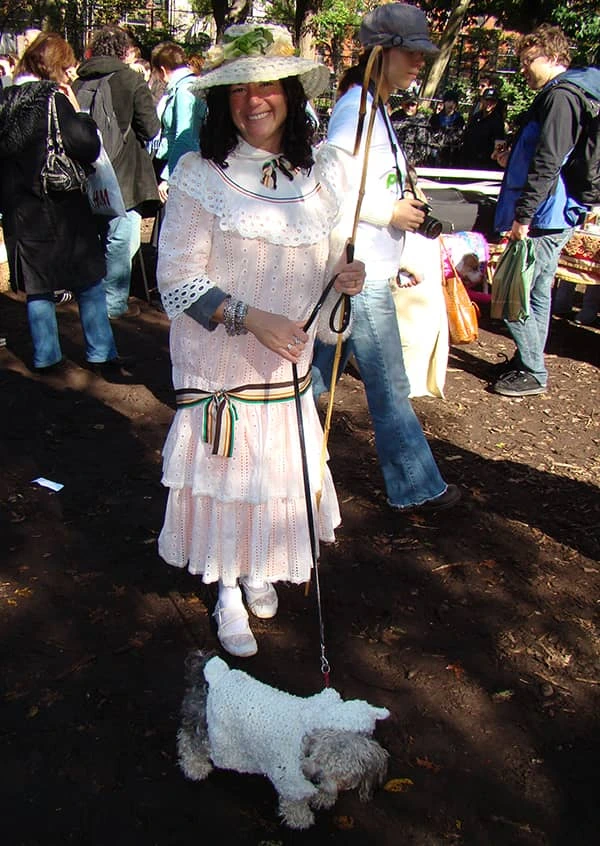
Photo credit: Wikimedia Commons
12. Where’s the beef?
We love this costume idea because it appeals to all generations. Just choose a famous ad campaign and embody it with your costume. A few ideas: The GEICO cavemen, Mac vs PC guys, the Nike swoosh, the Old Spice man, Flo from Progressive, and of course, Wendy’s “Where’s the beef?” lady.
13. Rejected Halloween candy
Want to recapture that familiar feeling of childhood disappointment? Dress your group as the least-loved leftovers of a Halloween candy stash. You’ve probably got your own list, but here are a few ideas from our team: pencils, toothbrushes, Smarties, Tootsie Rolls, candy corn, Bit O’Honey, Mary Janes, Good & Plenty, and dental floss.
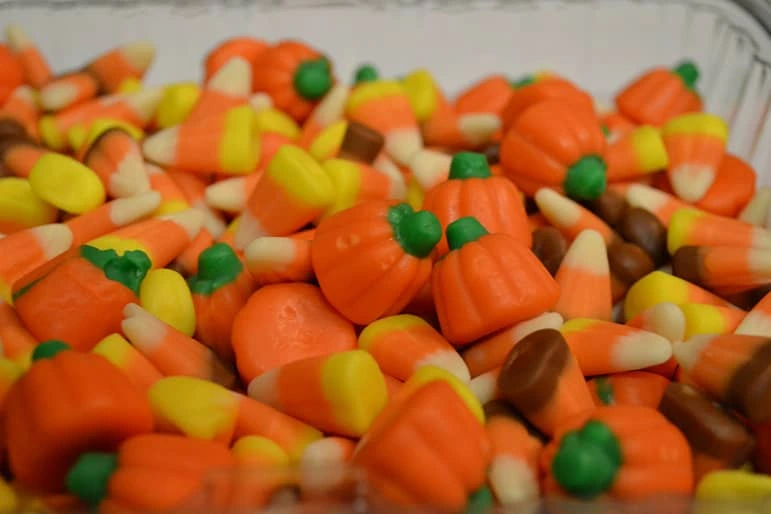
Photo credit: Jamal Fanaian
We hope you enjoyed this list! Share your best group Halloween costume ideas in the comments (if you dare), and Happy Halloween.
Small Business Saturday will be here before you know it, so we’ve put together a 5-step marketing guide that will help your small business brand knock it out of the park this year.
Related: 10 best social media campaigns you haven’t tried yet
1. Focus on a single goal
There’s a lot of hype around the biggest shopping weekend of the year. But that also means you have a lot of competition from retailers both online and off. To avoid burnout, it’s wise to pick one goal and stay laser-focused on it.
Of course, that doesn’t mean you can’t use multiple tactics to achieve this goal. Let’s say you own a beauty salon that relies heavily on referral business. Your goal may be to collect 200 referrals from existing customers. To make it happen, you’ll probably use a combination of email reminders, social media posts, and an in-store event. As long as every tactic points to your goal, you’re golden. Just be wary of offering competing promotions or asking for too much from your customers.
2. Take advantage of free design resources
American Express, the sponsor of Small Business Saturday, is offering several resources to participating small businesses. That includes downloadable templates for promotional material. These templates are good for showing your support of Small Business Saturday, but they don’t do a lot to promote your brand.
So we created a free template pack for you to customize with your branding for Small Business Saturday. All you need to do is sign up for Lucidpress (it’s free!), click the links below, then add your own logos and content.
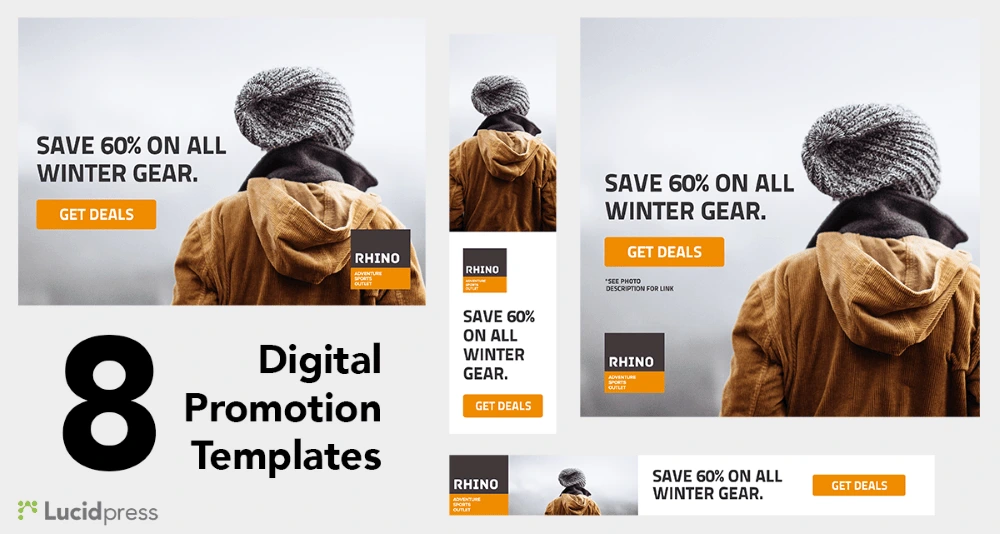
Free digital templates (click to access)
- Banner ad (160 x 600) template
- Banner ad (300 x 25) template
- Banner ad (728 x 90) template
- Webpage header template
- Facebook cover photo template
- Facebook photo post template
- Twitter photo post template
- Digital or print flyer template
3. Look far and wide for ideas
Every industry has its quirks. So instead of telling you which ideas are best for your business, we’ll show you how to find them yourself.
- Check with your local government and Chamber of Commerce. Often these organizations already have a plan for Small Business Saturday that you can easily piggyback on. For example, the state of Utah is running a “Shift Your Spending” campaign to encourage residents to allocate 10% of their holiday spending dollars to local businesses. Chambers of Commerce are also known to give out Small Business Saturday collateral, like postcards and storefront signs.
* Ask your peers for winning ideas. Do you belong to a trade organization? Connect with members to see what they’ve done in the past. Head to relevant subreddits and ask whether other business owners in your field have promotional ideas for the big day. Check out small business forums like Manta and see what fellow SMBs are planning. You can even request membership to a few groups on LinkedIn and join the conversation there.
* Sell for a season, not just a day. Recognize that your Small Business Saturday efforts should be part of a larger strategy for the holiday season. Sometimes googling “Small Business Saturday” yields the same ideas over and over. To get some fresh ideas, try searching for holiday-related keywords, e.g. [Industry name + holiday marketing ideas]. And be sure to check out the Small Business Administration’s list of holiday marketing ideas.
4. Ramp up your customer service
The biggest shopping weekend of the year is also your biggest opportunity to get new customers and lock in repeat business. Creminelli Fine Meats is a local producer of delicious artisanal meats in Utah, and no stranger to the importance of customer service.
Creminelli’s CMO Jeff Fuller says, “I have found that Black Friday, Small Business Saturday, and Cyber Monday are all fantastic opportunities to attract new customers. The combination of social media, outdoor media, and buzz-worthy deals drives a huge boost in sales. The key is to have amazing customer service during that long weekend, so you can earn a repeat visit from those same consumers—and hopefully another purchase at full price.”
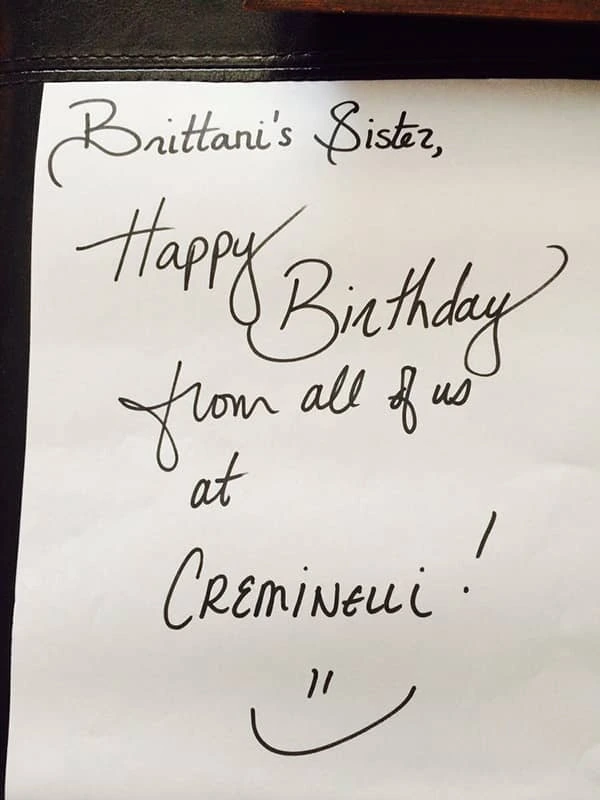
Make your customers happy with personal touches like this birthday note from Creminelli’s team.
Hiring additional staff can create a smoother shopping experience for your customers. What are other ways to delight them? Try using live chat to offer online shoppers the same great experience you’re creating in-store. Send thank-you cards to loyal customers before the big day. Hire a photographer, grab some seasonal props, and invite customers to snap their holiday photos while they shop.
There are tons of possibilities. Just think about what your customers will value most, then plan an initiative around it.
5. Don’t forget to follow through
You should have a simple way to gather contact info from customers on Small Business Saturday. This will build your mailing list so you can stay in touch year-round.
In all the hustle and bustle, make sure you engage on social media. Use the official Small Business Saturday hashtag #ShopSmall as you promote your business and chat with followers. Engaging on social media the day of an event is important, but more frequent posting is linked to higher engagement and loyalty from customers. We recommend amping up your posts both before and after Small Business Saturday.
And finally, it doesn’t hurt to offer discounts once the new year rolls around. This will help you stand out in customers’ minds from every other retailer.
Try Lucidpress today to create beautiful promotional materials for your brand—no expert knowledge required.
What’s the one gift everyone likes to receive? It’s cash.
Seriously, have you ever seen a person trying to return a cash gift or leaving it on a shelf to collect dust? I have never. For some gift-givers, however, cash is too simple and impersonal, so they go for the next best thing: gift cards.
Related: Why brand equity is important & how to measure it
Today, nearly all major retailers offer gift cards, and consumers love them. Stats show that people spend over $130 billion on gift cards per year, which is roughly 0.5% of the entire retail market.
Needless to say, retailers love gift cards, too. They’re easy to implement (especially if you’re an online seller), and besides increasing revenue and ensuring cash flow, gift cards also help with customer acquisition and loyalty.
But the question is, does offering gift cards affect brand equity? In other words, how do consumers, in general, perceive businesses that offer gift cards?
And finally, after all is said and done, should you offer gift cards in your store? (Here’s a hint: gift cards come with some risks but also great rewards for building a brand.)
Risk: Unused gift cards can make your brand look bad
Here’s the thing.
Even though gift cards are one of the most-wanted gifts people look forward to receiving on holidays & birthdays, nearly one-third of consumers never use the gift cards they’ve received.
That’s where your brand equity could suffer.
Stats show that out of $130 billion spent on gift cards, approximately $1 billion is lost in unredeemed gift cards. The gift card & credit card marketplace CardHub even found that between 2008 and 2014, consumers had lost over $44 billion in the form of unused credits.
A study by Dan Horne analyzed the impact of unredeemed gift cards on businesses, and it concluded that too many unused gift cards can harm the brand’s image. When gift cards are left unredeemed, the company basically gets money for nothing. “Consumers feel that retailers have taken advantage of them,” the author concludes.
Besides the people who forget about their gift cards, there’s another group: those who try to get rid of an unwanted gift by reselling it online. The problem is, the more often your brand’s gift cards are sold off online—via social media or on platforms specifically created for reselling—the less valuable they’re perceived to be.
Think about it.
The fact that many people are trying to get rid of your store’s gift card makes the products you sell look unwanted. Besides, the more users selling gift cards from the same brand, the lower resale price they offer. That may lower consumers’ perceived value of your products, and your business may start to find it difficult to sell them for the full price.
Rewards: Increased brand awareness, trustworthiness & reliability
Despite the challenges gift cards may pose for your brand, they’re still a great marketing & branding tool.
First of all, gift cards increase brand awareness.
“Imagine a gift card as a tiny billboard advertisement for your company inside the wallets of your customers. Every time they open up their wallets to pay for something, they see your brand on their gift card,” explains Ruby Camara, Chief Customer Officer of SixthContinent.
By offering gift cards or certificates in elegant custom packaging, you can boost your brand’s perceived value. Perhaps even more importantly, it helps your gift-buying customers look as though they’ve put more thought & consideration into choosing the gift.
“Gift cards may be small in size, but these mini-billboards come with very large branding opportunities,” concludes Dana Lambert, Associate Creative Director for The Motion Agency.
Secondly, gift cards can boost your brand’s trustworthiness.
Let me explain.
Having your gift cards placed in stores next to big players like Apple & Starbucks makes your business look like one of the big players, too. That’s a great way for lesser-known brands not only to attract more eyes but also to improve their trustworthiness.
Now, if selling your gift cards in stores is not an option for your business, offering digital gift cards might do.
According to Canadian POS, “Stores that sell gift cards are representative of the upper echelon of retailers.” That is, adding gift cards to your product catalog causes shoppers to perceive your brand more seriously. “This is most likely due to the fact that all major retailers offer gift cards,” Canadian POS assumes.
SixthContinent, a platform that offers gift cards for brands of all sizes in one place, believes that it’s beneficial for small companies to be placed next to big brands. “That increases the visibility and, eventually, the sales of that company as well,” they observed.
Finally, gift cards increase customer loyalty.
And loyal customers make your company look reliable.
When shoppers keep returning to the same retailer for more, it shows other potential customers (and the general public) that this company is doing something right.
When it comes to gift cards, studies show that it’s an effective way to build a loyal customer base. It’s been found that referred customers—including those who’ve discovered a brand through a gift card received from a friend—are likely to become loyal return customers as well.
By giving gift cards to friends and family, we show that we trust a brand enough to recommend it to people we care about. We put those mini-billboards into friends’ wallets, and that way, we make sure they keep thinking of the brand. That’s the perfect recipe for building brand loyalty.
Key takeaway
Gift cards offer great possibilities for improving brand equity—on the condition they’re actually redeemed. Companies that see gift cards only as an additional revenue source and hope to make extra money “for nothing” will lose the game in the long-term.
Ready to design your own branded gift certificates? Hop over to our free template gallery and get started!
Editor’s note: Originally, the Lucidpress blog featured two different blog posts that highlighted two eras — past and present — of Black graphic designers. In an effort to ensure the post accurately reflects the folks featured in it and to honor the need for diverse representation in graphic design, we have combined the two blog posts into one and audited them with up-to-date information.
At Lucidpress, we’re passionate about great design and inspiring everyone to create beautiful things. So we’re delighted to bring you this list of influential Black designers, reaching back to the beginning of the 1900s and continuing up to the present day. Let’s dive in!
Charles Dawson
We start with Charles Dawson, who was born in 1899. He became well-known in the 1920s-30s for his illustrated advertisements, especially for beauty products and Black artists. Unsurprisingly, his journey includes many firsts which paved the way for students after him to pursue their passions.
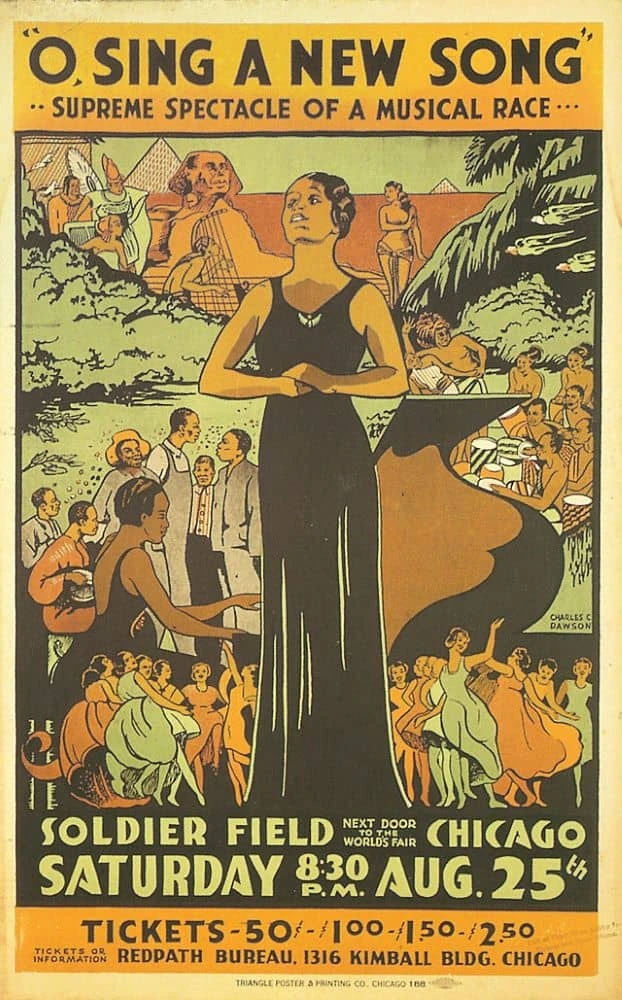
“O Sing A New Song” musical poster
In 1907, Dawson was the first Black student admitted to the Art Students League in New York. It was a challenging environment where he faced many instances of bias and discrimination. In 1912, he took the summer to work in a buffet car and save tuition for the Art Institute of Chicago, which he observed was “bias-free.” An active student, Dawson was involved in several jobs and student organizations. He was a founding member of the Arts and Letters Society, the first Black artist collective in Chicago.
Dawson started working for Chicago Engravers in 1919 and departed three years later to become a freelance designer. With fellow alumni from the Institute, he established the Chicago Art League, an exhibit group for Black artists. Throughout his career, he would break more barriers:
- In 1927, his Negro in Art Week exhibition at the Art Institute of Chicago was the first show of African-American art at a major American museum.
- In 1934, he was the only Black artist with a substantial role in the Century of Progress Fair. His illustrated mural of the Great Migration was displayed by the National Urban League in the Hall of Social Science.
For much of the 1930s, Dawson worked for Valmour Products. In 1944, he became the curator for both the Museum of Negro Art & Culture and the George Washington Carver Museum, where he served until his retirement in 1951.
Learn more about Charles Dawson at AIGA.org.
Aaron Douglas
Aaron Douglas was also born in 1899, but his contributions to the Harlem Renaissance (then called the “New Negro Movement”) helped to propel the art style forward. He blended the geometric shapes of Art Deco, the linear rhythm of Art Nouveau, and the rich traditions of African art to create something entirely new.
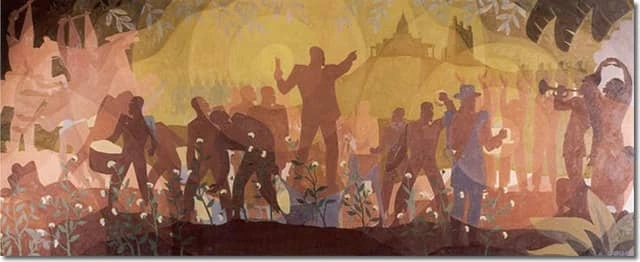
“Aspects of Negro Life” mural
Graduating with a BFA from the University of Nebraska in 1922, Douglas taught art in Nebraska and Missouri high schools. In 1924, he moved to New York to apprentice for Winold Reiss. After designing magazine covers for Opportunity, The Crisis, FIRE!!, and Harlem, he became a highly sought-after cover illustrator, especially among Black writers.
Douglas continued to shape the Harlem community, crafting several murals including the famous Aspects of Negro Life. In 1938, he moved to Nashville, Tennessee, to found the art department at Fisk University—a department he chaired for nearly three decades before retiring in 1966.
Learn more about Aaron Douglas at AIGA.org.
LeRoy Winbush
We jump forward a few years to LeRoy Winbush, who was born in 1915. His ambition might be summarized best this way: though it took him 11 years to be accepted as the first Black member of the Art Directors Club of Chicago, it took him only five more to become its president.
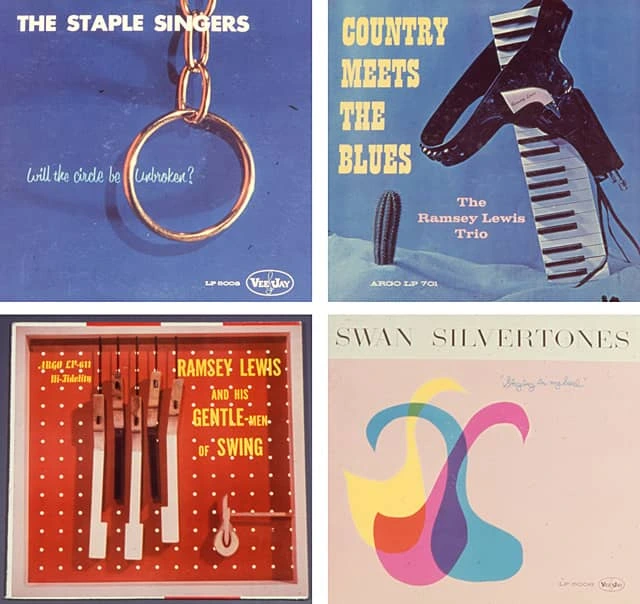
Album cover designs
Winbush started designing in 1936, merely one year after high school. He apprenticed making signage, murals and flyers. When he joined the sign shop at Goldblatt’s department store, he was the only Black employee. Seven years later, he was the company’s Art Director, overseeing a staff of 60 people.
In 1945, he founded Winbush Associates, his own design firm. Colleagues say he split his day between art-directing for Consolidated Manufacturing Company and for Johnson Publishing (Ebony, Jet). His career spanned many highlights:
- In 1959, he was the chairman for the International Design Conference in Aspen.
- In 1964, he helped design Illinois’ exhibit for the World’s Fair, including an animatronic Abe Lincoln that became the prototype for Disney’s Hall of Presidents.
- In 1985, he helped design an underwater coral reef in the Living Seas pavilion at EPCOT.
Winbush also gave back to his community through education. Despite having no formal education himself, he taught visual communication at School of the Art Institute of Chicago. He also developed a long-term exhibit about sickle-cell anemia for Chicago’s Museum of Science.
Learn more about LeRoy Winbush at AIGA.org.
Thomas Miller
Thomas Miller was born in 1920. When he graduated from the Ray-Vogue College of Design in 1950, he was the institution’s only Black student. Soon afterwards, he was one of two to be accepted into the Society of Typographic Art.
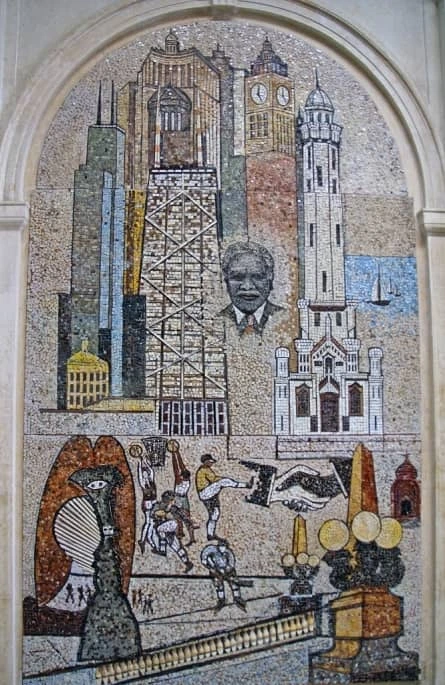
Founder’s mosaic at DuSable Museum of African American History
Miller enjoyed decades as a successful commercial designer. After working for Gerstel/Loeff, he joined the international design firm Morton Goldsholl Associates, where he worked for 35 years on large ad campaigns, such as 7-Up’s major redesign in the 1970s.
When he wasn’t working, Miller still followed his own artistic passions, creating oil paintings and monotypes in his signature style. One of his most well-known projects can be seen today in the DuSable Museum of African American History: he created mosaic portraits of the museum’s eight founders.
Learn more about Thomas Miller at The History Makers and Wikipedia.
Emmett McBain
A graduate of the Illinois Institute of Technology, Emmett McBain (born in 1935) also studied at the Ray-Vogue College of Design as well as the American Academy of Art. He became a designer for Vince Cullers and Associates, the first Black-owned ad agency. But that wouldn’t be the last time he was a pioneer in African-American advertising.
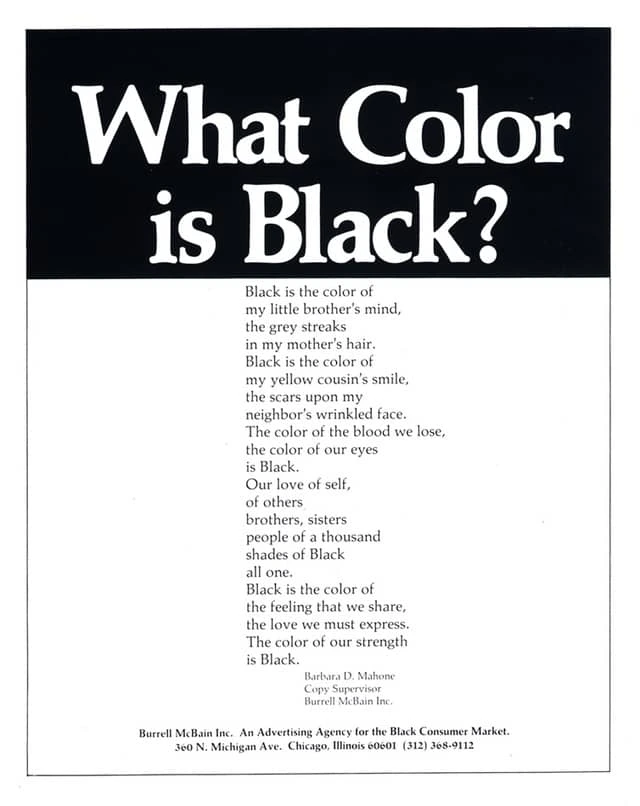
“What Color is Black?” poem advertisement
McBain enjoyed a varied design career, from being Playboy’s promotional art director to designing album covers for Mercury Records. He worked for J. Walter Thompson and Associates, where he took part in Ford’s 1964 campaign to introduce the Mustang.
In 1971, McBain partnered with Tom Burrell to form Burrell McBain Inc. This ad agency pioneered advertising to African-American markets and introduced corporations to the concept that “Black people are not dark-skinned white people.” Their campaigns recognized and emphasized the demographic and cultural differences that had been previously ignored in mass media. Though the agency is still around today as Burrell Communications Group, McBain left in 1974 to pursue art and support Black artistry.
Learn more about Emmett McBain in this NewCity article.
Archie Boston
In one of his most famous ads, Archie Boston leans over a table of pens and eyes the camera. “I told Pentel what to do with their pens,” the headline declares. “And they did it.” It’s a single example plucked from Boston’s long career of self-aware, provocative work.
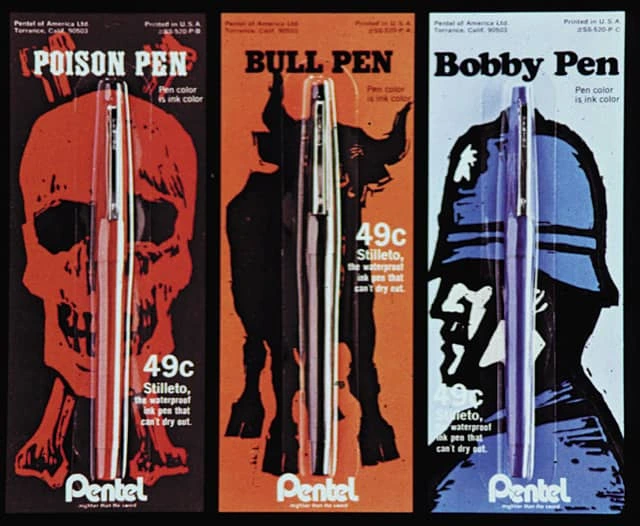
Pentel packaging designs
Born in 1943, Boston attended Chouinard Art Institute (later called CalArts) in 1961—and nearly dropped out to take a job in advertising. Instead, he took an internship at Carson/Roberts during his senior year. After working with his brother Brad on a variety of projects, the two founded Boston & Boston design in 1967. They never shied away from race in their work, opting instead to acknowledge it directly and challenge audiences to rethink their assumptions and prejudices.
In 1969, Archie joined Botsford Constantine and McCarthy for eight years. During his time there, he also founded Archie Boston Graphic Design and began taking clients in 1973. Later he became the first Black president of the Los Angeles Art Directors Club.
From his 20s onward, Archie has been a teacher. He started at Chouinard, and currently he’s a professor at California State University Long Beach (CSULB), where he’s taught for nearly 40 years.
Learn more about Archie Boston at AIGA.org.
Sylvia Harris
The first female designer on our list, Sylvia Harris was born in 1953. She earned her BFA in communication arts and design from Virginia Commonwealth University, and her MFA in graphic design from Yale University.
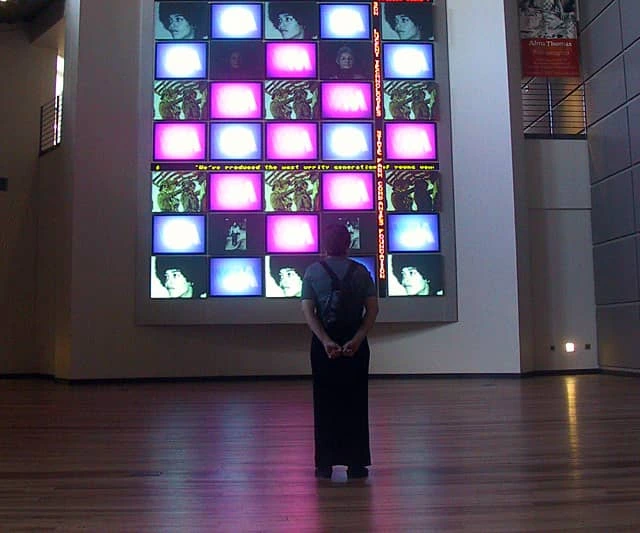
Exhibit design for The Women’s Museum
Harris spent much of her career in the public sector, planning and improving the communities around her. She started as a designer for WGBH, Boston’s public TV station. From there she moved on to The Architects Collaborative (TAC) headed by Walter Gropius, and then the prestigious Skidmore, Owings and Merrill (SOM). It was at SOM that Harris got involved in environmental urban planning; her clients there included the Massachusetts Bay Transit Authority and the U.S. Department of Transportation.
In 1980, along with two partners, Harris founded Two Twelve Associates, a graphic design consulting firm. She worked on projects for many clients, including the New York State Council of the Arts, Port Authority of New York and New Jersey, and the Central Park Zoo. She also taught design students at Purchase College State University and at Yale.
Learn more about Sylvia Harris at AIGA.org.
Gail Anderson
Gail Anderson was born in 1962 and studied at the School of Visual Arts in New York. The art of words and letters have played a major role in her design career, starting from the beginning when she worked at Vintage Books and The Boston Globe Sunday Magazine. As an expert in conceptual typography, she works with all sorts of materials—traditional and non-traditional—to create eclectic expressions of style.
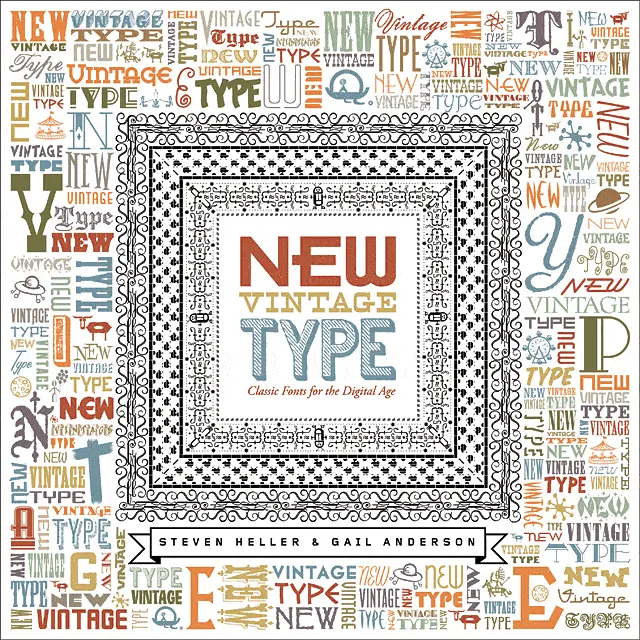
“New Vintage Type” book cover
Anderson was an impressive fixture at Rolling Stone Magazine for 15 years. Starting as an associate in 1987, she rose to become its Senior Art Director before departing in 2002. From there, she joined SpotCo, one of New York’s largest entertainment design agencies. Again, she rose to the top to become its Creative Director before departing in 2010.
Residents of New York City are likely familiar with Anderson’s work without even realizing it. Her poster designs for Broadway and off-Broadway plays have been hung all around the city and featured in outdoor transit advertising.
Currently, Anderson is a partner at Anderson Newton Design with Joe Newton. She’s also a faculty member at the School of Visual Arts, and she’s co-published several books on typography and graphic design.
Learn more about Gail Anderson at AIGA.org.
Eddie Opara
Born in England in 1972, Eddie Opara studied at the London College of Printing and at Yale University. After earning his MFA in 1997, he moved to New York City to work for Imaginary Forces.
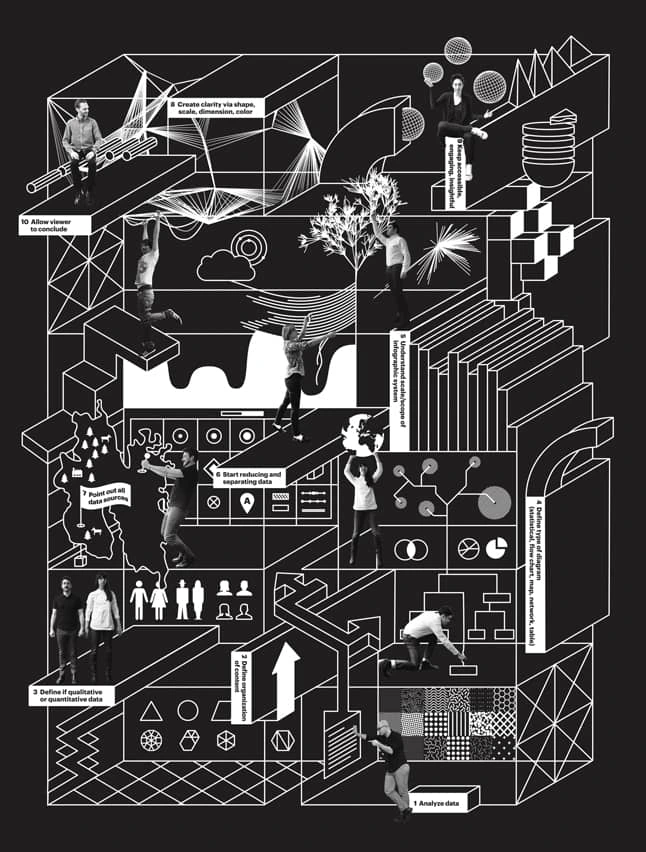
Infographic about infographics for Fast Co.
It wasn’t too long after that when Opara became the Art Director for 2 x 4, the influential design studio. In 2005, he founded his own interactive design studio, The Map Office, in New York and began work for clients such as the Studio Museum in Harlem, the Architecture Research Office, the Queen Museum of Art, and New York University. In 2010, Opara joined Pentagram as a partner.
Opara’s work sits at the intersection of design and technology. He has earned numerous awards in his career, including a Gold Cube from the Art Directors Club. His work is the permanent collection of the Museum of Modern Art (MoMA). In 2012 and 2014, he was named one of Fast Company‘s 100 Most Creative People in Business. Today, he’s also a senior critic at Yale.
Learn more about Eddie Opara at Famous Graphic Designers.
Michele Washington
Michele Washington, who studied at the School of Visual Arts and Brooklyn’s Pratt Institute before working for Vogue Butterick Patterns. Her career in media is wide-ranging, from newspaper design at the Chicago Tribune and The New York Times to editorial art direction at Essence and Self magazines.
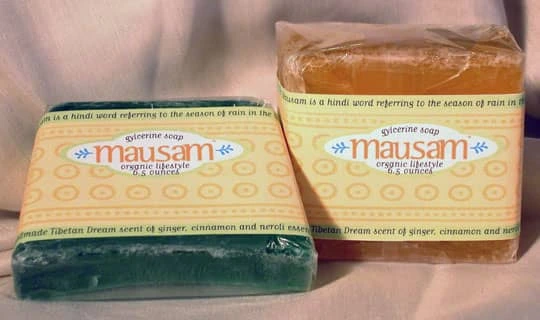
Mausam product packaging designs
Washington has taught a grad-level exhibition class at New York’s Fashion Institute of Technology (FIT). She founded and leads her own design firm, Washington Design, in Brooklyn’s DUMBO neighborhood. Today she also provides creative direction for Cox Matthews Associates and user research for Cerebral Design.
Multi-cultural influences abound in Washington’s work, as her colorful designs often incorporate language, patterns, and textures from many cultures around the world. One example is the bright and earthy product packaging for her line of natural home & body products. Many of her design influences are featured in articles she’s written for her website, CulturalBoundaries.com.
Learn more about Michele Washington at AIGA.org.
Dana James Mwangi
“Creatives can do good business.” That’s the headline on Mwangi’s website , and this mantra captures her holistic approach to web design, branding & entrepreneurship.
If you’re worried you’re not creative enough, or your ideas are just too far-fetched to work, Mwangi has something to say about that — her words are inspiring and certainly ring true if you work in design or any creative field.
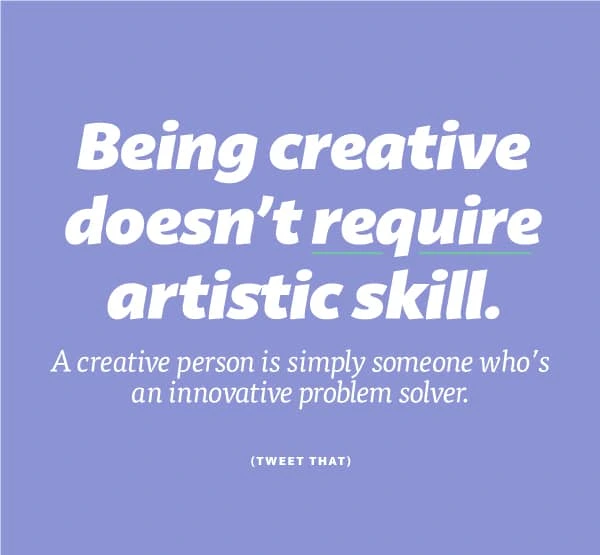
@danajamesmwangi | @cheerscreative
Timothy J. Hykes
Tim Hykes is a UX consultant and frequent speaker at design conferences including Adobe Max, Design + Diversity, and AIGA. In fact, he’s become a leader in AIGA, the largest community of design advocates in the nation.
He’s also a co-founder of the Design + Diversity conference. “The Design + Diversity conference explores proactive ways to make the design industry more diverse…This is the only conference that focuses on diversity issues in the design field. This event provides a platform for constructive conversation among those who design, innovate, and lead.”
@timothyhykes | @plusdiversity
Hassan Rahim
A self-taught artist and designer, Hassan Rahim has developed an enigmatic style and dark sensibility that’s landed him work with clients like Nike, Urban Outfitters, Warp Records, and Marilyn Manson. According to an interview with Eye on Design, his big break came when a skate brand noticed his designs on MySpace and reached out to offer him work. He was 17 years old.
Antionette Carroll
Antionette Carroll sees design differently. In a world where everything has been designed—including systems of inequality—we can use design as a system to create a more equitable world. In her powerful TEDx talk (Carroll is a 2018 TED fellow), she introduces this concept and challenges us to find ways to intentionally redesign our communities.
In line with this mission, Carroll founded the Creative Reaction Lab, a nonprofit that “educates, trains, and challenges cities to co-create solutions with Black and Latinx populations to design healthy and racially equitable communities.” She calls this new form of creative problem-solving Equity-Centered Community Design.
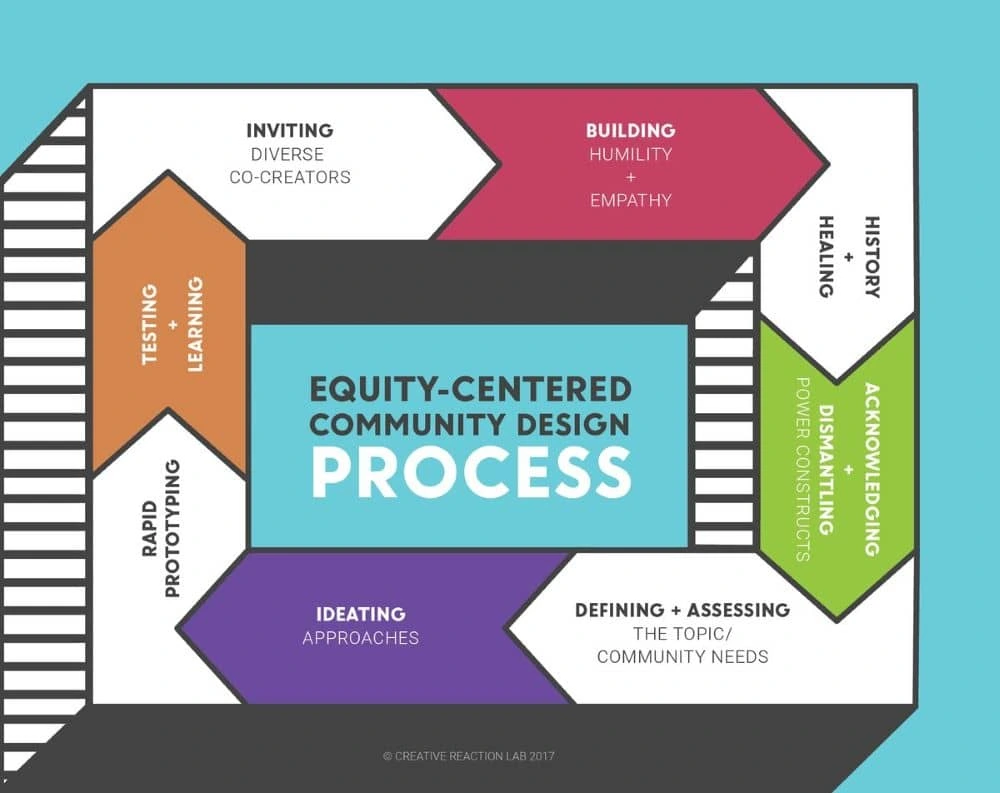
Currently, Carroll is an AIGA National Board Member. Along with Timothy J. Hykes (who we introduced earlier in this list), she’s also a co-founder of the Design + Diversity Conference.
Jewel Burks
Jewel Burks has the distinction of working for and partnering with some of the biggest brands in the tech industry, from Google and Amazon to Collab Capital. Even more impressive is the fact that she founded and sold a tech startup called Partpic, a program that uses visual search algorithms to streamline the purchasing of manufacturing parts.
Burks is currently a board member for Goodie Nation, a nonprofit that supports innovative problem-solving in underserved communities. “The big thing I want in starting a business is to make a difference in my community,” she says on her website. As one of Forbes’ 30 Under 30, she’s off to an incredible start.
Nakita M. Pope
Nakita M. Pope is an experienced branding strategist with nearly 20 years in the industry. She holds the fabulous title of Chief Chick at Branding Chicks, her boutique branding agency. Branding Chicks specializes in women-owned businesses and female-centric brands. She works with them to narrow their focus, boost their confidence, and clarify their messaging so it resonates with their audience.
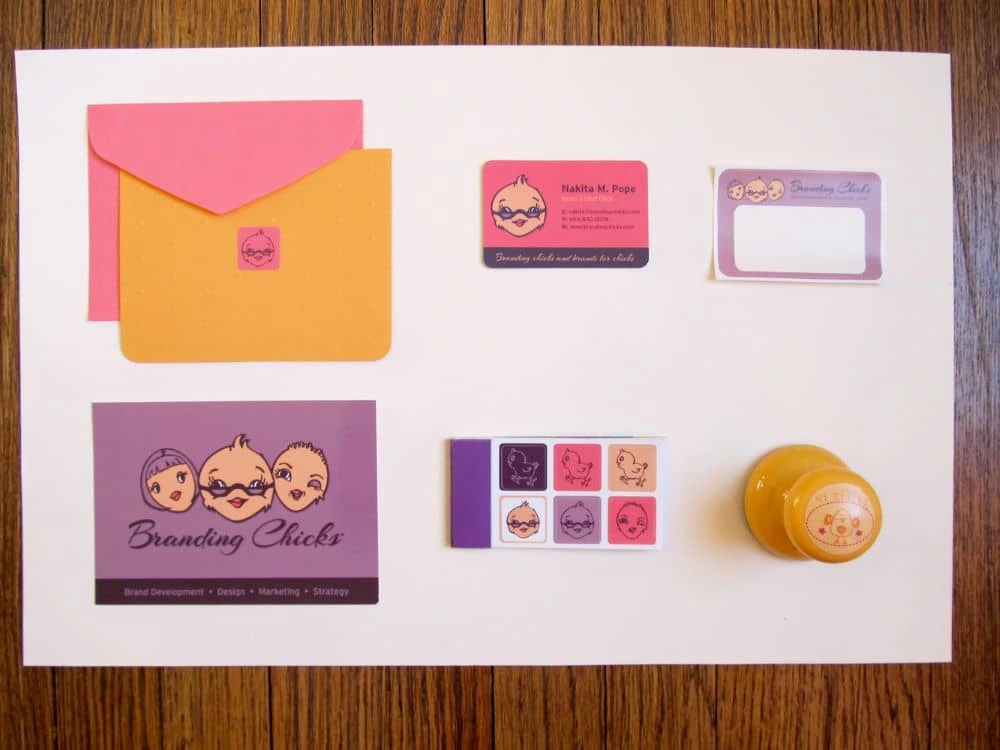
Pope is currently a diversity and inclusion officer for The Creative Circus, an advertising school where students can build their portfolios. She’s also a board member of AIGA Atlanta and a member of the AIGA National Diversity & Inclusion Task Force.
“I love the strategy of design. I love how designers think and solve problems visually,” she says in an interview with 28 black Designers. “As I’ve morphed into a brand strategist, I realize just how much strategy I was already doing as a designer and how that is what makes the difference between design that is simply aesthetically pleasing and design that is smart and achieves an objective.”
@brandingchicks | @realbrandingchicks
Dian Holton
Dian Holton is the Deputy Art Director for AARP. When she isn’t designing and overseeing creative work there—such as AARP’s The Magazine and TheGirlfriend—she also creates compelling window displays and mannequin styles for The Gap. Her vibrant, fresh design sensibility makes her portfolio (and her social media feeds) a visual delight.
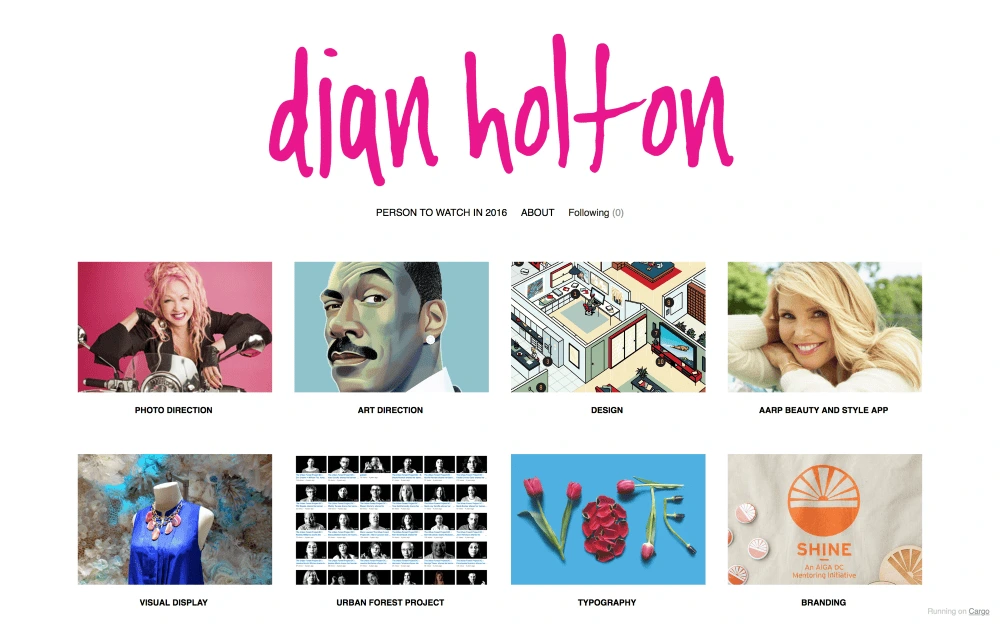
A graduate of the Yale School of Management, Holton serves as the Mentoring Director for AIGA’s Washington, D.C. chapter, where she oversees a mentoring speaker series with a local high school.
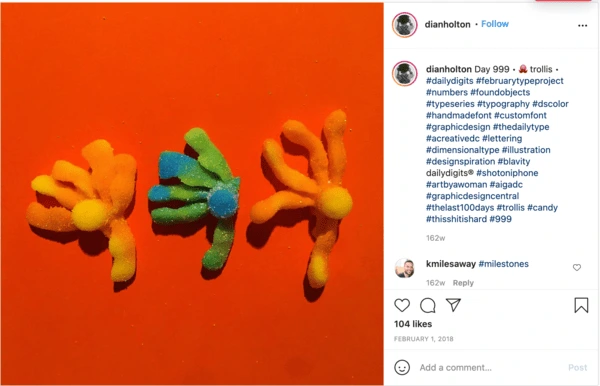
A post shared by Dian Holton (@dianholton) on Feb 1, 2018 at 8:52pm PST
Check out Holton’s awesome Daily Digits series, where she photographs numbers made of daily objects (like flowers, hairpins and gummy worms). The project just surpassed 1,000 posts, and we can’t wait to see what’s next.
Wrap-up
This is only a handful of the incredible Black designers who’ve shaped our visual culture and continue to influence it today. It’s important to recognize not only their talent but their determination to overcome any obstacles and pave the way for future designers. Major thanks to the AIGA for being an invaluable resource in researching this post. Another round of gratitude for the African American Graphic Designers group on Facebook for being a constant source of inspiration and for introducing me to many of the folks on this list.